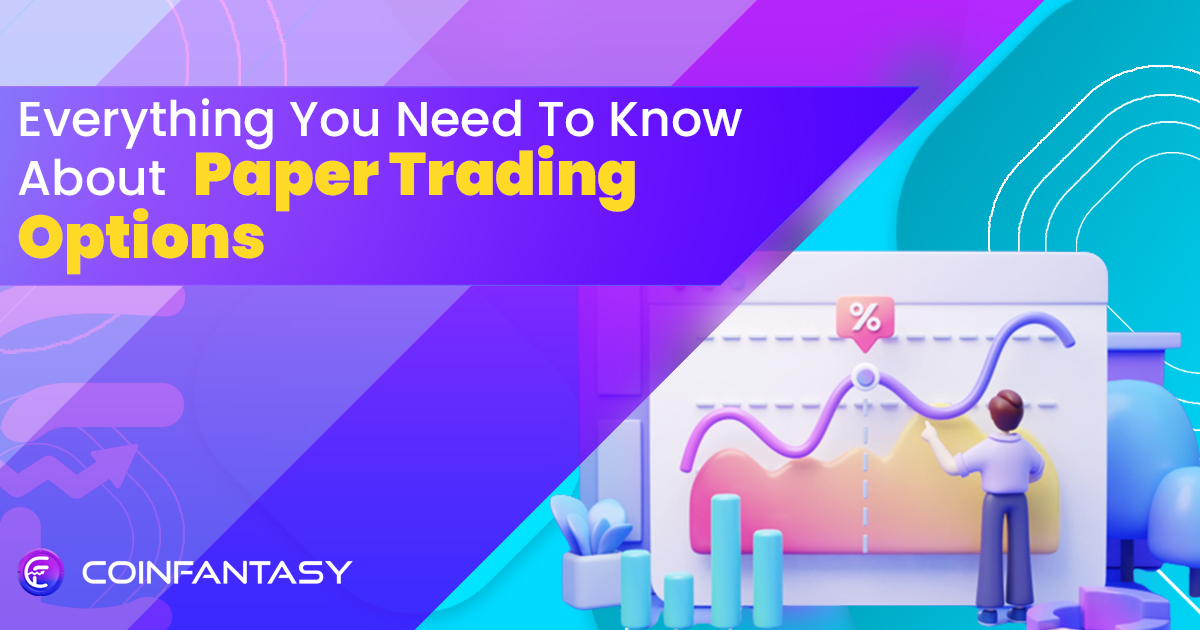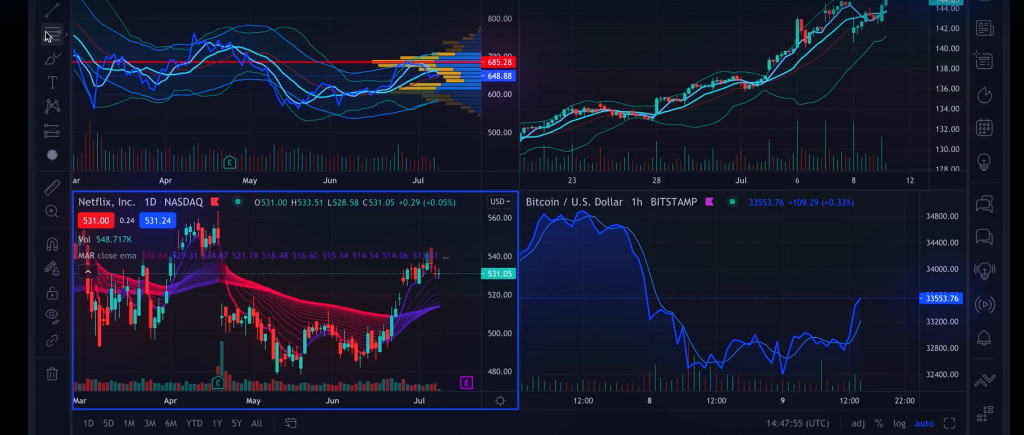Have you ever considered diving into the world of options trading but felt overwhelmed by the risk? You’re not alone. Options trading can be a complex and volatile arena, but it’s also a potentially lucrative one. For those hesitant to risk real capital, paper trading offers a safe and accessible way to hone their skills and build confidence before entering the real market.

Image: www.coinfantasy.io
Paper trading, also known as simulated trading, is a practice where you execute trades using virtual funds without risking real money. In the context of options, paper trading allows you to explore different strategies, analyze market movements, and experiment with various variables without financial repercussions. This valuable tool enables you to learn the intricacies of options trading, understand the various risk profiles associated with different strategies, and build a solid foundation before committing your hard-earned capital.
Understanding the Basics of Options Trading
Before we delve into the intricacies of paper trading options, let’s establish a fundamental understanding of options trading itself. Options are financial contracts that grant the buyer the right, but not the obligation, to buy or sell an underlying asset at a predetermined price (strike price) within a specific period (expiration date). The buyer pays a premium for this right, while the seller receives the premium and assumes the obligation to buy or sell the asset if the buyer exercises their option.
There are two main types of options:
- Call Options: These give the buyer the right to purchase the underlying asset at the strike price. Call options are profitable when the underlying asset price increases.
- Put Options: These give the buyer the right to sell the underlying asset at the strike price. Put options are profitable when the underlying asset price decreases.
Options trading offers a wide range of strategies, from simple buy-and-sell positions to more complex multi-leg trades. Understanding the various strategies and their risk profiles is crucial for success in options trading. Paper trading provides a safe environment to experiment with these strategies and learn the nuances of risk management and profit potential.
The Value of Paper Trading Options
Paper trading is a powerful tool for aspiring options traders for several reasons:
- Risk-free Learning Environment: The biggest advantage of paper trading is that it eliminates the financial risk associated with real trading. You can explore different strategies, experiment with various variables, and make mistakes without losing money. This allows you to learn from your errors and develop your trading skills in a safe and controlled environment.
- Practice and Skill Development: Paper trading provides an opportunity to develop your trading skills and refine your trading plan without real-world consequences. You can practice entry and exit points, manage your risk effectively, and analyze market conditions to improve your decision-making process. The more you paper trade, the more confident and skilled you become in navigating the complexities of options trading.
- Understanding Volatility: Options are particularly sensitive to volatility. Paper trading allows you to observe how different strategies react to market fluctuations and gain a better understanding of how volatility impacts your positions. This knowledge is essential for managing risk and maximizing potential profits.
- Testing Your Trading Plan: Before risking your hard-earned money, paper trading allows you to test your trading plan thoroughly. By simulating real-world trading scenarios, you can identify potential flaws in your strategy and refine it accordingly. A well-tested trading plan is crucial for success in any form of trading, but it’s particularly important with options due to their inherent complexities and risks.
- Building Confidence: Paper trading can boost your confidence as a trader. By experiencing success in a risk-free environment, you can build the necessary self-assurance to transition to real trading. This confidence will help you navigate the emotional challenges of trading and maintain a disciplined approach when real money is involved.
How to Get Started with Paper Trading Options
Getting started with paper trading options is surprisingly simple. There are several platforms available online that offer free or paid paper trading options. Here’s a step-by-step guide to getting started:
- Choose a Platform: Several brokerages offer free or paid paper trading platforms. Some popular platforms include:
- TD Ameritrade thinkorswim: A comprehensive platform with robust features, including advanced charting, backtesting tools, and real-time data.
- Interactive Brokers: Known for its wide range of options and low commissions.
- Schwab: Offers a user-friendly platform with access to a broad selection of options contracts.
- Open a Practice Account: Once you’ve chosen a platform, open a paper trading account.
- Fund Your Account: The platform will assign you a virtual balance.
- Start Trading: Begin by exploring different options strategies. Look up relevant information about the options you’re interested in to fully understand their mechanics, risk profiles, and profit potential.
- Analyze Your Results: Track your paper trading performance closely. Use your paper trades to analyze your mistakes and learn from them. As your skills improve, gradually increase the complexity of your strategies.
- Set Realistic Goals: Don’t expect to become a successful options trader overnight. Be patient, persistent, and focused on gradual learning and improvement.
- Stick to Your Trading Plan: Before you start trading, develop a clear trading plan that outlines your strategies, risk tolerance, and entry and exit criteria. Adhering to your plan consistently will lead to better discipline and ultimately, better results.
- Manage Your Risk Strictly: Even though you’re not risking real money, managing your risk while paper trading is essential for developing good habits. Practice proper position sizing and stop-loss orders to limit your potential losses.
- Keep It Consistent: The key to successful paper trading is consistency. Set aside time each day or week to practice and review your trades.
- Don’t Just Focus on Profitability: While profits are important, paper trading is more than just tracking your P&L (profit and loss). It’s about understanding the nuances of options trading, learning to analyze market movements, and developing a solid trading strategy.
- Start Small: When you begin trading with real money, start with a small amount that you are comfortable losing.
- Maintain Discipline: As with paper trading, maintain discipline and stick to your trading plan. Don’t let emotions dictate your trading decisions.
- Continue Learning: The journey of learning in options trading never truly ends. Stay informed about market trends, new strategies, and advancements in options trading.

Image: www.getaninfo.com
Tips for Successful Paper Trading Options
While paper trading eliminates financial risk, it’s still important to approach it with a disciplined and strategic mindset. Here are some tips to maximize your learning experience:
Transitioning to Real Trading
After you’ve gained sufficient experience and confidence through paper trading, you may be ready to transition to real trading. Before you do, take the time to thoroughly review your paper trading results and ensure you are comfortable with the risks involved. Here are some considerations:
Paper Trading With Options
Conclusion
Paper trading offers a valuable opportunity to learn the trade of options trading in a risk-free environment. By simulating real-world scenarios, practicing different strategies, and analyzing market movements, you can build the foundation of knowledge and experience required to transition to real trading with confidence. While paper trading alone cannot guarantee financial success, it provides a crucial stepping stone toward building a robust trading strategy and ultimately, achieving your financial goals in the exciting world of options trading.






